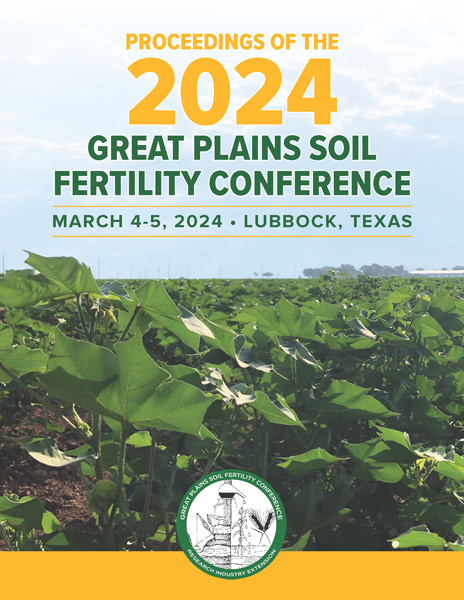Conference Proceedings Available!
Proceedings
Authors
| Filter results4 paper(s) found. |
|---|
1. Tillage and Nitrogen Rates Influenced Wheat and Sorghum ProductivityReduced tillage (RT) or no-tillage (NT) practices and reducing fallow frequency can both decrease soil losses from wind erosion and conserve soil water in the semiarid regions of the US Great Plains. This study evaluated sorghum grain yield in 2013 and wheat grain yield in 2014 and 2015 as influenced by long-term nitrogen (N) fertilizer application rates (0, 20, 40, and 60 lb N ac- 1) and tillage intensity [clean tillage (CT), RT, and NT] in dryland winter wheat–sorghum-fallow (W-S-F) cropping... M. Mikha |
2. Utilizing Long-term Organic Amendments to Improve Soil Health in Semi-arid, Grazed GrasslandsDetermining soil health changes associated with long-term land application of organic amendments, such as biosolids, is important for understanding and improving overall environmental health. In 1991, a single application of biosolids were surface applied (treatment rate: 0, 2.5, 5, 10, 21, or 30 Mg ha−1) to a semi-arid grazed grassland. In 2002, a repeated application of biosolids were surface applied at the same rate to ½ of all plots. In 2018, soil samples were obtained from 0-15... C. Buchanan, J. Ippolito |
3. Carbon and Nitrogen Cycling in High-Elevation Hay Meadows: Understanding Processes for Improved Agroecosystem ProductivityIrrigated hay meadows are an integral, but often under-performing component of livestock operations in western rangeland ecosystems. Flood irrigation resulting in seasonal saturation, high elevation, and cool temperatures common to these systems result in concentration of organic materials near the soil surface, constraining nitrogen cycling, forage productivity and diversity. Improved understanding of nutrient cycling, soil organic matter processes, and ecosystem services of irrigated hay meadows,... D. Adamson, J. Norton |
4. Increasing Winter Wheat Grain Yield By Replicating the Management Adopted in High-Yielding Commercial FieldsLarge winter wheat (Triticum aestivum) yield gaps between farmer yields and yield potential in the southern Great Plains indicate the need to improve recommendations of best management strategies to profitably bridge this gap. Many studies have been completed on individual management factors pre-determined by the individual researcher, but we are not aware of studies comparing combination of practices that producers are currently using, which would be more relevant for real-world scenarios.... L.P. Ryan, R.P. Lollato, L. Haag, J. Holman |
